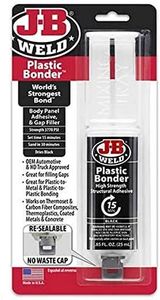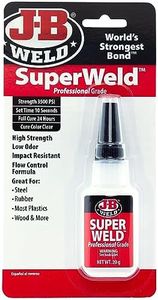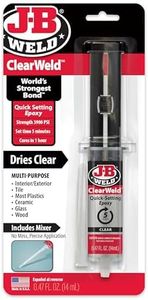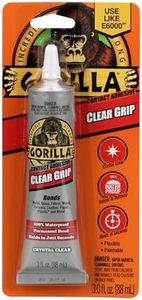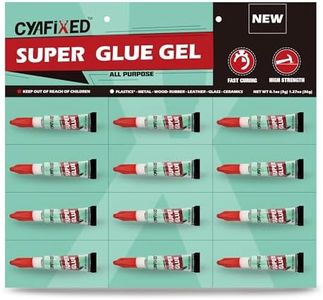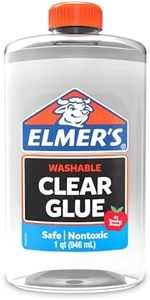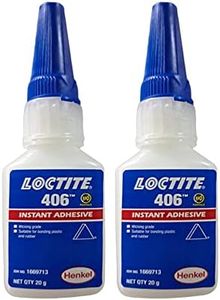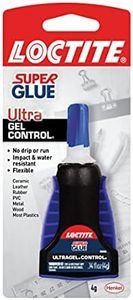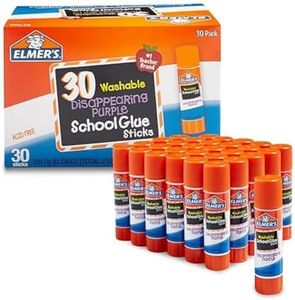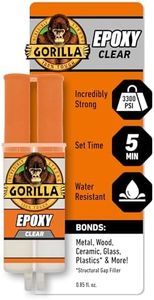We Use CookiesWe use cookies to enhance the security, performance,
functionality and for analytical and promotional activities. By continuing to browse this site you
are agreeing to our privacy policy
10 Best Plastic Glues
From leading brands and best sellers available on the web.Buying Guide for the Best Plastic Glues
Choosing the right plastic glue is key to ensuring strong, lasting bonds for your project. Not all plastic glues are the same—some work best on specific types of plastics, while others are more general-purpose. Before you buy, it’s helpful to know what kind of plastic you’re dealing with, how strong you need the bond to be, how much time you have for drying, and whether you mind any fumes or odors. Thinking about these factors will help you pick a glue that’s safe and effective for your needs.Type of Plastic CompatibilityThis spec tells you which plastics a particular glue can bond. Not all adhesives work on every type of plastic—common plastic types include ABS, PVC, polystyrene, acrylic, and polypropylene. Some glues only bond well with certain plastics, while others are formulated as 'universal' but may not give the strongest hold on specialty plastics. To navigate this, check the packaging or product description for a list of compatible plastics. If you know what plastic your items are made of, look for glues that specifically mention that type. If you're unsure, universal glues can be a safe bet, but may need a test patch. Your main guiding point should be the plastic in your project—match the glue to it for a reliable bond.
Bond StrengthBond strength refers to how strong and durable the connection will be between the joined plastics. This can range from light-duty (good for crafts or decorations) to heavy-duty (for items that need to be held under stress or weight). Light bond strength is usually enough for small repairs or models, while structural or industrial strength is needed for load-bearing or highly-used items. To pick the right one, consider how much stress or movement the joined pieces will face; the more demanding the role, the stronger the bond your glue should have.
Drying and Curing TimeDrying time is how long it takes for the glue to set or harden enough to hold the pieces in place, while curing time is how long until the glue fully reaches its maximum strength. Some glues set in seconds but may take hours or a day to cure completely. Fast-setting glues are great for quick fixes, but longer-curing options might form a stronger bond in the end. If you need to use or move the item soon, a quick-drying glue is helpful; if you can wait and want maximum strength, opt for products with a longer full cure.
Application MethodThis refers to how the glue is applied, such as bottles with precision tips, tubes, brush-on formulas, or two-part epoxies that require mixing. Simple squeeze bottles or pens are good for small, precise applications, while brush-on formulas work well for covering larger areas. Two-part systems may seem more complicated but can provide excellent strength and versatility, especially for tougher plastics. Consider the size and shape of what you’re gluing—delicate items benefit from precision applicators, while bigger jobs may need brush or spreadable glue.
Transparency and FinishThe transparency or color of dried glue impacts the appearance of your project, especially if it will be visible. Some glues dry clear, making seams less noticeable, while others may dry white or yellow. If aesthetics matter—like for models or repairs where the joint will show—look for a formula labeled 'clear-drying.' For invisible repairs, transparency is important; if the glue line won’t be seen, it matters less.
Odor and FumesSome plastic glues give off strong fumes or odors that can irritate sensitive users or require good ventilation, while others are low-odor or non-toxic. This is especially important if you’ll be working indoors or for extended periods. Check for labels like 'low odor' or 'non-toxic' if you are sensitive, have children or pets at home, or are working in a small space. If ventilation is limited, prioritize safer formulas.
Water and Heat ResistanceIf your glued plastic will be exposed to water or high temperatures, check if the adhesive offers water or heat resistance. Not all glues can handle these conditions—some may weaken or dissolve. For outdoor items, kitchenware, or anything that might get warm or wet, look for a glue specifically rated for resistance to these elements to ensure your bond lasts.
